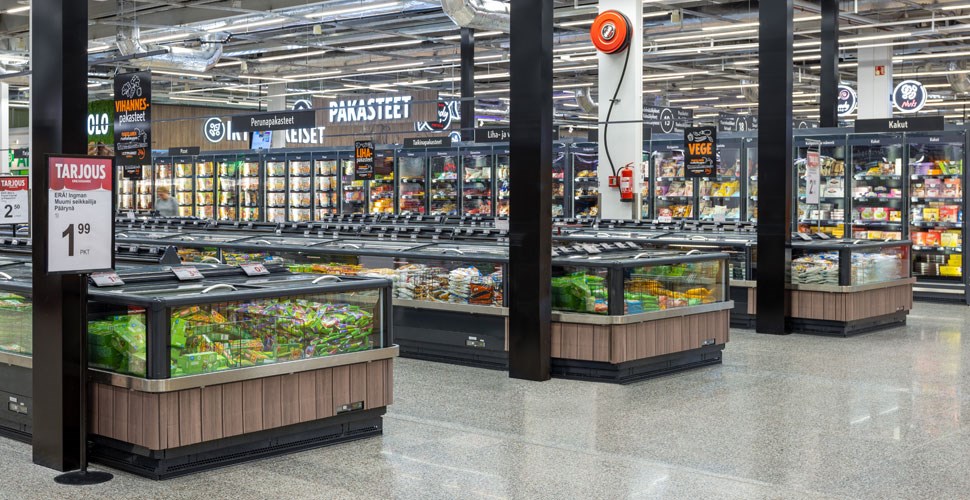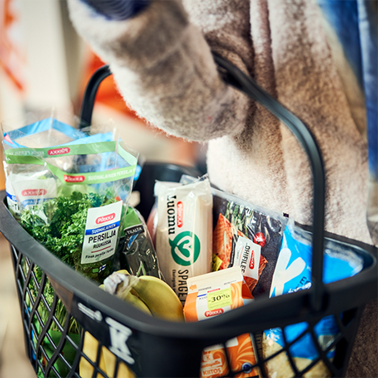Finland is lagging behind in its achievement of the EU’s targets to reduce the use of plastic carrier bags and for recycling plastic. New measures are needed and both businesses and customers must be involved. Customers are being encouraged to reduce...

IInnovative energy systems for all K-Citymarkets in Tampere – recycling waste heat almost halves the need for district heating

As part of its target to be carbon neutral by 2025, K Group is constantly seeking new ways of improving the energy efficiency of its approximately 1,800 K-stores. Energy saving measures have been systematically carried out in K Group for decades, and boosting energy efficiency is particularly relevant right now.
“Grocery stores consume a lot of energy ensuring the cold chain of products. The key means of improving energy efficiency are upgrading refrigeration units and lighting, and new innovations, such as a heat circulation system that recycles waste energy, and the use of analytics services that analyse energy consumption at stores,” says Antti Kokkonen, Building Services Manager at K Group.
K Group’s heat circulation system efficiently utilises all the waste heat from the property, such as the condensate heat of the refrigeration system and the waste heat of exhaust air, as its energy source, and generates energy for all the heating and cooling systems in the property.
The K-stores’ heat circulation system received the Motiva Energy Genius of the Year 2019 prize and the international heat pump industry’s Heat Pump City of the Year award in 2020.
The newest energy solutions in use at K-Citymarket Turtola
K-Citymarket Turtola in Tampere that was renovated in the summer is an example of a store that is equipped with all of K Group’s newest energy efficiency measures.
“Upgrading the refrigeration system to an energy-efficient system that uses carbon dioxide as a natural refrigerant has significant benefits for the environment. In addition to the other measures, the store’s building automation system is connected to an analytics service, which fine-tunes and ensures the energy-efficient use of the systems,” says Kokkonen.
Recycling the waste heat from refrigeration units is estimated to reduce the K-Citymarket’s annual consumption of district heating by about 40 per cent.
“It is great that in connection with the renovation, we gained modern, environmentally friendly refrigeration units and energy-saving LED lighting. We want to act responsibly and make it easy for our customers to make responsible choices. For example, for a long time now, customers have been able to bring their plastic and cardboard packaging to the store for recycling, and now that electric cars are increasing in popularity, customers can charge their cars while doing their shopping at the store,” says K-Citymarket Turtola’s retailer Marko Vainikainen.
A similar energy efficiency renovation is also being planned in connection with the upgrades at K-Citymarket Lielahti and K-Citymarket Linnainmaa, where new energy-efficient LED lighting, refrigeration systems and a heat circulation system will be installed in the stores. Over 2,000 solar panels on the roof of K-Citymarket Linnainmaa also produce energy for the store’s needs.
The electricity used in all the K-Citymarkets in Tampere is produced with renewable energy and as of next year an increasing amount will be produced with Finnish wind power.
Customers can charge their electric cars at the K Charge stations located at all the K-Citymarkets in Tampere. The electricity provided at all K Charge stations is renewable energy produced with Finnish wind power.
Towards a carbon neutral K Group
K Group’s target is to be carbon neutral in 2025 and reduce emissions from its own operations to zero by 2030.
The key measures to achieve these targets include using 100 per cent renewable energy, improving energy efficiency and switching to biofuels in transports in Finland.
 YES
YES
 NO
NO









